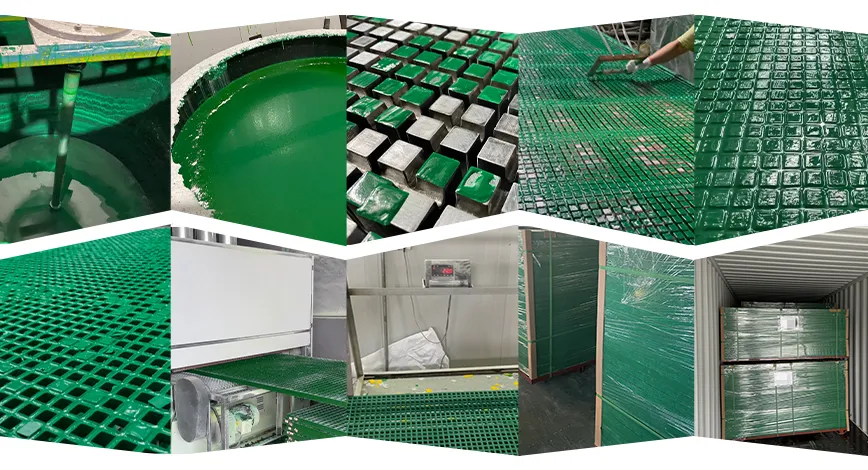loading...
- No. 9, Xingyuan South Street, Dongwaihuan Road, Zaoqiang County, Hengshui, Hebei, China
- admin@zjcomposites.com
- +86 15097380338
- Welcome to visit our website!
Optimizing Storage Solutions with Sectional Tanks for Enhanced Efficiency and Durability
Understanding Sectional Tanks Features, Benefits, and Applications
In the world of water storage systems, sectional tanks have emerged as a popular choice for various applications. These tanks, comprised of multiple sections or panels, provide flexibility, efficiency, and robustness in water management. In this article, we will delve into the characteristics, advantages, and diverse uses of sectional tanks, shedding light on why they have become a preferred solution for both residential and industrial needs.
What are Sectional Tanks?
Sectional tanks, also known as modular tanks, are made up of several panels assembled to create a complete tank structure. These panels can be crafted from materials like steel, fiberglass, or plastic, allowing for different durability, weight, and cost considerations. Depending on the specific requirements, sectional tanks can be customized in terms of volume, shape, and height, making them suitable for a broad range of applications.
Key Features of Sectional Tanks
1. Flexibility and Customization One of the standout features of sectional tanks is their modular design. This makes it easy to modify the size and shape of the tank based on the available space and required capacity. For instance, if a facility undergoes expansion, additional panels can be added to increase the tank’s storage capacity without significant structural alterations.
2. Ease of Installation Sectional tanks are relatively straightforward to install. Since they are shipped in sections, they can be transported to sites with limited access where traditional large tanks might not fit. Once on-site, the panels are assembled, which streamlines the installation process and reduces labor costs.
3. Durability Many sectional tanks are constructed from high-quality, corrosion-resistant materials that ensure their longevity. For example, galvanized steel tanks are commonly used for their strength and ability to withstand harsh weather conditions, while fiberglass tanks are chosen for their resistance to chemicals and UV radiation.
4. Cost-Effectiveness Due to their modular nature and ease of installation, sectional tanks typically come at a lower overall cost compared to traditional tanks. Their ability to be customized according to specific storage needs further enhances their cost-effectiveness.
5. Accessibility for Maintenance Maintenance is critical for any water storage system, and sectional tanks offer practical designs that allow for easy access to all parts of the tank. This accessibility simplifies inspections, cleaning, and repairs, promoting higher standards of upkeep.
Benefits of Using Sectional Tanks
Sectional tanks provide numerous benefits that make them an appealing choice for both commercial and residential applications
sectional tanks

- Space Efficiency Their customizable nature allows sectional tanks to fit into tighter spaces without compromising on storage capacity. This is particularly valuable in urban settings or facilities with limited outdoor space.
- Scalability As water needs grow, sectional tanks can be easily expanded. This adaptability means organizations can invest wisely, only increasing capacity when necessary.
- Environmental Sustainability Many sectional tanks are designed with eco-friendly materials and systems that minimize their environmental impact. Additionally, the ability to repair and replace sections, rather than the entire tank, contributes to waste reduction.
- Variety of Applications Sectional tanks are suitable for various applications, including agricultural use, fire suppression systems, potable water storage, and industrial processes. Their versatility makes them an attractive solution for a broad audience.
Application Areas for Sectional Tanks
1. Residential Settings Homeowners often employ sectional tanks for rainwater harvesting systems and supplementary water storage, allowing them to manage water more efficiently and sustainably.
2. Commercial Enterprises Businesses require reliable water storage solutions for firefighting, irrigation, and process water. Sectional tanks offer the scalability and durability necessary for these operations.
3. Industrial Uses In industrial environments, sectional tanks can store various liquids, including chemicals, wastewater, and potable water, contributing to effective resource management and operational efficiency.
4. Municipal Water Systems Many municipalities use sectional tanks as part of their water supply systems, offering a reliable and flexible solution to manage the community's diverse needs.
Conclusion
Sectional tanks present an efficient, adaptable, and practical solution for a variety of water storage needs. Their customizable design, ease of installation, and durable materials make them an excellent choice for residential, commercial, and industrial applications. As water management continues to be a critical concern globally, the importance of sectional tanks will likely grow, highlighting their role in a sustainable and effective water supply strategy.
-
The Rise of FRP Profiles: Strong, Lightweight, and Built to LastNewsJul.14,2025
-
SMC Panel Tanks: A Modern Water Storage Solution for All EnvironmentsNewsJul.14,2025
-
GRP Grating: A Modern Solution for Safe and Durable Access SystemsNewsJul.14,2025
-
Galvanized Steel Water Tanks: Durable, Reliable, and Ready for UseNewsJul.14,2025
-
FRP Mini Mesh Grating: The Safer, Smarter Flooring SolutionNewsJul.14,2025
-
Exploring FRP Vessels: Durable Solutions for Modern Fluid HandlingNewsJul.14,2025
-
GRP Structures: The Future of Lightweight, High-Performance EngineeringNewsJun.20,2025
